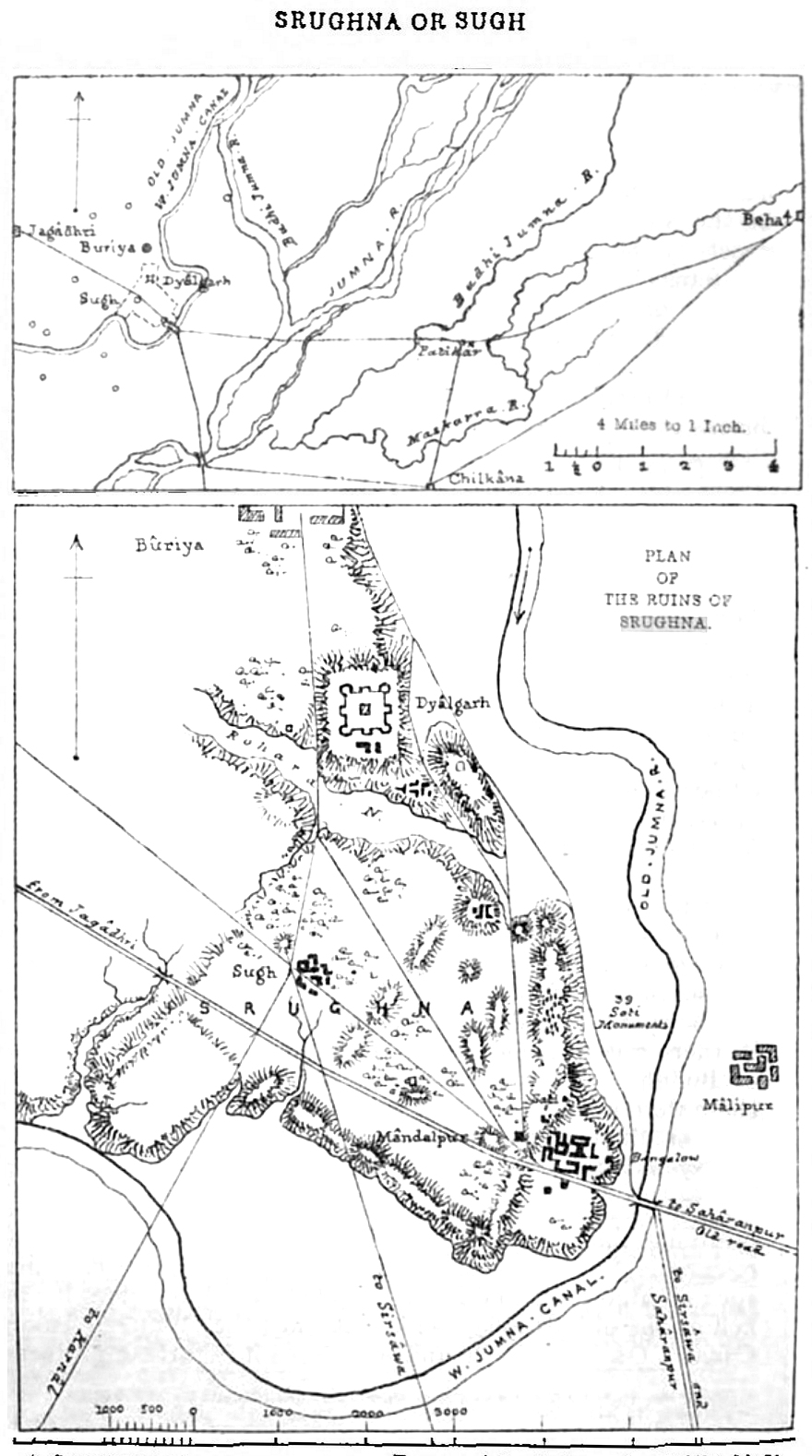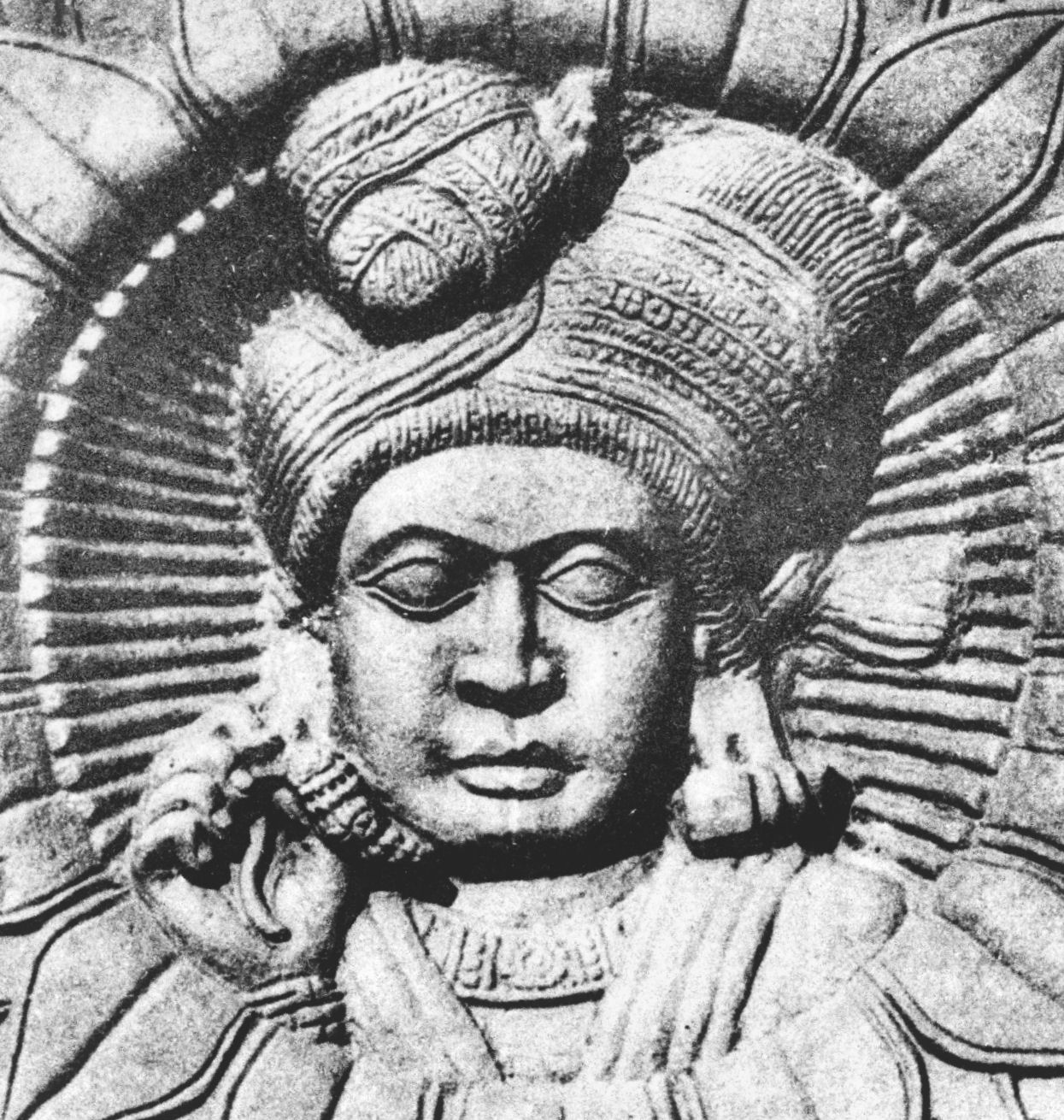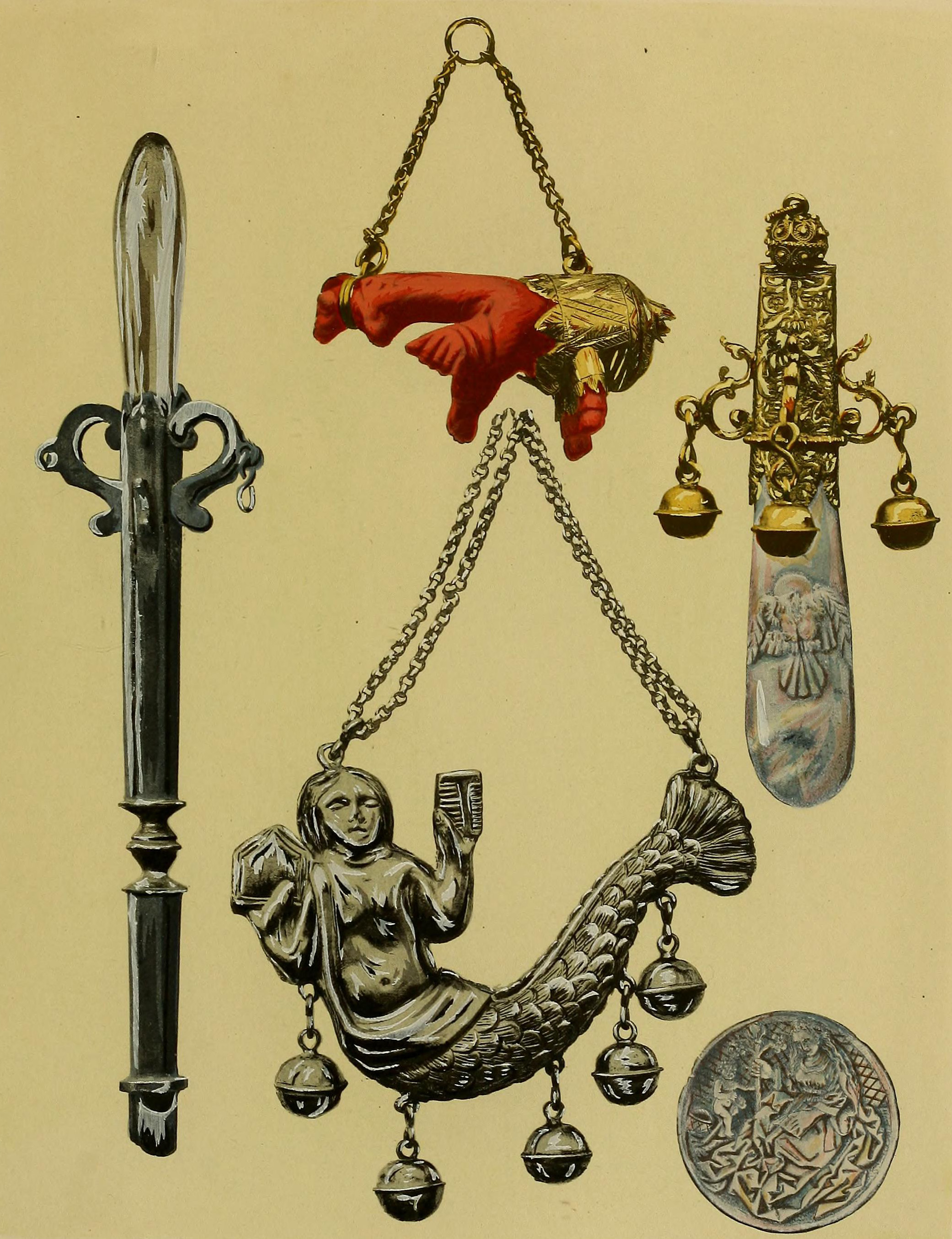|
Sughana
Srughna, also spelt Shrughna in Sanskrit, or Sughna, Sughana or Sugh in the spoken form, was an ancient city or kingdom of India frequently referred to in early and medieval texts. It was visited by Chinese traveller, Xuanzang (Hiuen Tsang) in the 7th century and was reported to be in ruins even then although the foundations still remained. Xuanzang described the kingdom as extending from the mountains to the north, to the Ganges river to the East, and with the Yamuna river flowing through it. He described the capital city on the west bank of the Yamuna as possessing a large Buddhist vihara and a grand stupa dating to the time of the Mauryan emperor, Ashoka. Srughna is identified with the Sugh Ancient Mound located in the village of Amadalpur Dayalgarh, in the Yamunanagar district of Haryana state of India. To this day, the ancient Chaneti Buddhist Stupa, probably dating to the Mauryan period, stands in the area, about northwest of Sugh. Identification Xuanzang saw s ... [...More Info...] [...Related Items...] OR: [Wikipedia] [Google] [Baidu] |
Shunga Empire
The Shunga Empire ( IAST: ') was an ancient Indian dynasty from Magadha that controlled areas of the most of the northern Indian subcontinent from around 185 to 73 BCE. The dynasty was established by Pushyamitra, after taking the throne of the Maurya Empire. Its capital was Pataliputra, but later emperors such as Bhagabhadra also held court at Besnagar (modern Vidisha) in eastern Malwa. Pushyamitra ruled for 36 years and was succeeded by his son Agnimitra. There were ten Shunga rulers. However, after the death of Agnimitra, the second king of the dynasty, the empire rapidly disintegrated:K.A. Nilkantha Shastri (1970)''A Comprehensive History of India: Volume 2'' p.108: "Soon after Agnimitra there was no 'Sunga empire'." inscriptions and coins indicate that much of northern and central India consisted of small kingdoms and city-states that were independent of any Shunga hegemony.Bhandare, Shailendra. "Numismatics and History: The Maurya-Gupta Interlude in the Gangetic Plain". ... [...More Info...] [...Related Items...] OR: [Wikipedia] [Google] [Baidu] |
Sanskrit
Sanskrit (; attributively , ; nominalization, nominally , , ) is a classical language belonging to the Indo-Aryan languages, Indo-Aryan branch of the Indo-European languages. It arose in South Asia after its predecessor languages had Trans-cultural diffusion, diffused there from the northwest in the late Bronze Age#South Asia, Bronze Age. Sanskrit is the sacred language of Hinduism, the language of classical Hindu philosophy, and of historical texts of Buddhism and Jainism. It was a lingua franca, link language in ancient and medieval South Asia, and upon transmission of Hindu and Buddhist culture to Southeast Asia, East Asia and Central Asia in the early medieval era, it became a language of religion and high culture, and of the political elites in some of these regions. As a result, Sanskrit had a lasting impact on the languages of South Asia, Southeast Asia and East Asia, especially in their formal and learned vocabularies. Sanskrit generally connotes several Indo-Aryan lang ... [...More Info...] [...Related Items...] OR: [Wikipedia] [Google] [Baidu] |
Panini (grammarian)
Panini may refer to: People * Pāṇini (fl. 6th–4th century BCE), Sanskrit grammarian in ancient India * Panini (surname), Italian surname Art, entertainment, and media * Panini Group, a company headquartered in Modena, Italy, best known for its brand of collectible stickers ** Panini Comics, a publisher of comic books and magazines, part of Panini Group * Panini, a character in the animated television series ''Chowder'' * "Panini" (song), by American rapper Lil Nas X from his debut EP ''7'' Other uses * Panini (sandwich), a type of sandwich, Italian in origin * Panini (tribe), an alternative taxonomical grouping posited to classify chimpanzees and bonobos * Panini Modena, the original name of Modena Volley, an Italian volleyball team * Panini projection, a map projection used in image processing, named after Giovanni Paolo Panini * Panini Rural Municipality, Lumbini Province, Nepal See also * Pani (other) * Paganini (other) Niccolò Paganini (1782– ... [...More Info...] [...Related Items...] OR: [Wikipedia] [Google] [Baidu] |
Gupta Empire
The Gupta Empire was an ancient Indian empire which existed from the early 4th century CE to late 6th century CE. At its zenith, from approximately 319 to 467 CE, it covered much of the Indian subcontinent. This period is considered as the Golden Age of India by historians. The ruling dynasty of the empire was founded by the king Sri Gupta; the most notable rulers of the dynasty were Chandragupta I, Samudragupta, Chandragupta II and Skandagupta. The 5th-century CE Sanskrit poet Kalidasa credits the Guptas with having conquered about twenty-one kingdoms, both in and outside India, including the kingdoms of Parasikas, the Hunas, the Kambojas, tribes located in the west and east Oxus valleys, the Kinnaras, Kiratas, and others.Raghu Vamsa v 4.60–75 The high points of this period are the great cultural developments which took place primarily during the reigns of Samudragupta, Chandragupta II and Kumaragupta I. Many Hindu epics and literary sources, such as Mahabharata and ... [...More Info...] [...Related Items...] OR: [Wikipedia] [Google] [Baidu] |
Kushan Empire
The Kushan Empire ( grc, Βασιλεία Κοσσανῶν; xbc, Κυϸανο, ; sa, कुषाण वंश; Brahmi: , '; BHS: ; xpr, 𐭊𐭅𐭔𐭍 𐭇𐭔𐭕𐭓, ; zh, 貴霜 ) was a syncretic empire, formed by the Yuezhi, in the Bactrian territories in the early 1st century. It spread to encompass much of modern-day territory of, Afghanistan, Pakistan, Uzbekistan, and northern India, at least as far as Saketa and Sarnath near Varanasi (Benares), where inscriptions have been found dating to the era of the Kushan Emperor Kanishka the Great. The Kushans were most probably one of five branches of the Yuezhi confederation, an Indo-European nomadic people of possible Tocharian origin, who migrated from northwestern China (Xinjiang and Gansu) and settled in ancient Bactria. The founder of the dynasty, Kujula Kadphises, followed Greek religious ideas and iconography after the Greco-Bactrian tradition, and being a follower of Shaivism. The Kushans in ... [...More Info...] [...Related Items...] OR: [Wikipedia] [Google] [Baidu] |
Maurya Empire
The Maurya Empire, or the Mauryan Empire, was a geographically extensive Iron Age historical power in the Indian subcontinent based in Magadha, having been founded by Chandragupta Maurya in 322 BCE, and existing in loose-knit fashion until 185 BCE. Quote: "Magadha power came to extend over the main cities and communication routes of the Ganges basin. Then, under Chandragupta Maurya (c.321–297 bce), and subsequently Ashoka his grandson, Pataliputra became the centre of the loose-knit Mauryan 'Empire' which during Ashoka's reign (c.268–232 bce) briefly had a presence throughout the main urban centres and arteries of the subcontinent, except for the extreme south." The Maurya Empire was centralized by the conquest of the Indo-Gangetic Plain, and its capital city was located at Pataliputra (modern Patna). Outside this imperial center, the empire's geographical extent was dependent on the loyalty of military commanders who controlled the armed cities sprinkling it. During ... [...More Info...] [...Related Items...] OR: [Wikipedia] [Google] [Baidu] |
Toy Rattle
A baby rattle is a rattle produced specifically for the amusement of an infant. Rattles have been used for this purpose since antiquity, and experts in child development believe they help the infant improve hand eye coordination by stimulating their senses. History Baby rattles go back at least 2500 years. A rattle made of clay was found in Poland in a grave of a baby who was a member of the early Iron Age Lusatian culture, and was documented by archaeologists. That hollow clay rattle was shaped like a pillow and was filled with little balls. It was found next to a tiny urn containing the cremated remains of the baby. Many similar examples of baby rattles have been recovered from Greco-Roman archaeological sites. Often, these rattles were in the shape of a pig or a boar, and sometimes a figure of a baby was riding the animal. Pigs were associated with the Greek goddess Demeter, who was invoked in rituals intended to protect babies in life and death. Greek philosopher Aristotle ... [...More Info...] [...Related Items...] OR: [Wikipedia] [Google] [Baidu] |
Crucibles
A crucible is a ceramic or metal container in which metals or other substances may be melted or subjected to very high temperatures. While crucibles were historically usually made from clay, they can be made from any material that withstands temperatures high enough to melt or otherwise alter its contents. History Typology and chronology The form of the crucible has varied through time, with designs reflecting the process for which they are used, as well as regional variation. The earliest crucible forms derive from the sixth/fifth millennium B.C. in Eastern Europe and Iran. Chalcolithic Crucibles used for copper smelting were generally wide shallow vessels made from clay that lacks refractory properties which is similar to the types of clay used in other ceramics of the time. During the Chalcolithic period, crucibles were heated from the top by using blowpipes.Hauptmann A., 2003, ''Developments in copper Metallurgy During the Fourth and Third Millennia B.C. at Feinan'', Jord ... [...More Info...] [...Related Items...] OR: [Wikipedia] [Google] [Baidu] |
Plug (jewellery)
A plug (sometimes earplug or earspool), in the context of body modification, is a short, cylindrical piece of jewelry commonly worn in larger-gauge body piercings. Modern western plugs are also called flesh tunnels. Because of their size—which is often substantially thicker than a standard metal earring—plugs can be made out of almost any material. Acrylic glass, metal, wood, bone, stone, horn, glass, silicone or porcelain are all potential plug materials. Plugs are commonly, and have historically, been worn in the ears. They can, however, be inserted into any piercing. In order for a plug to stay put within a piercing, the ends of its cylindrical shape are often flared out, or the plug is fastened in place by o-rings. Combinations of these two methods may also be used. * A double-flared (or saddle) plug, flares outward at both ends, and is thinner towards the middle. No o-rings are needed to keep the plug in the piercing, but the fistula needs to be wide enough to accommo ... [...More Info...] [...Related Items...] OR: [Wikipedia] [Google] [Baidu] |







.jpg)